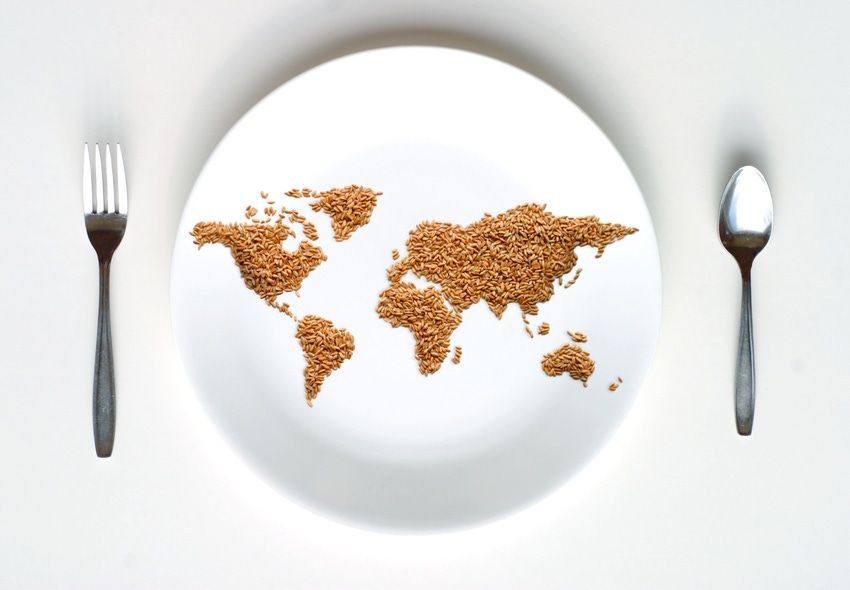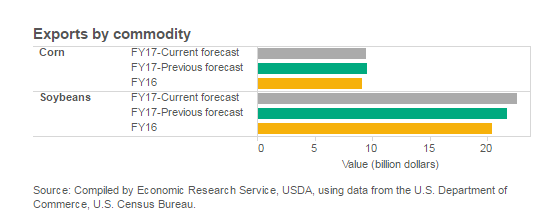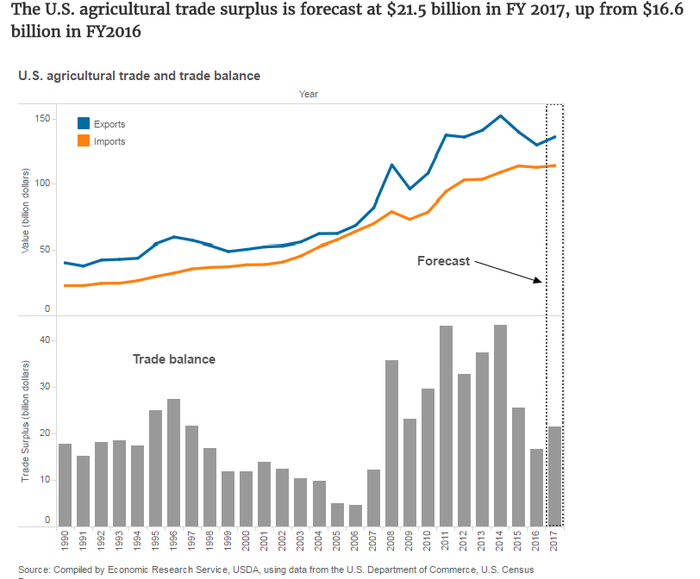May 26, 2017

U.S. agricultural exports are projected to rise in fiscal 2017, driven by rising exports of livestock, poultry, and dairy.
Fiscal year 2017 agricultural exports are projected at $136.0 billion, up $2.0 billion from the November forecast, largely due to expected increases in livestock, poultry, and dairy exports. Strong foreign demand and higher prices help boost livestock, poultry, and dairy exports by $1.6 billion, with beef, pork, and dairy leading the increase from the last report.
Grain and feed exports are forecast down $1.0 billion to $28.6 billion, as declines in feeds and fodders and coarse grains more than offset higher wheat exports.
Oilseed and product exports are forecast at $31.6 billion, up $600 million, as strong soybean prices more than offset reductions in soybean meal exports.
U.S. agricultural imports are also forecast up slightly in fiscal 2017 due to increased imports of horticultural products, livestock, and oilseed
Agricultural imports in fiscal year 2017 are forecast at $114.5 billion, up $2.0 billion from the previous forecast, due to increased imports of horticultural products and, to a lesser extent livestock and oilseed products.
The fiscal year 2017 livestock and meats import forecast is raised $200 million from the November forecast to $15.8 billion. Beef is forecast up $100 million to $4.8 billion due to higher price and volume expectations. Live cattle imports are forecast up $100 million to $1.5 billion on greater volumes.
Projected imports of oilseeds and products are increased $300 million from the previous forecast to $8.6 billion, based in part on higher expected volumes of imports of rapeseed oil and meal.

China is expected to reclaim its position as the largest U.S export market in FY 2017, edging out Canada
The forecast for China is $22.3 billion, $500 million higher than the November forecast. Though shipments of sorghum and DDGS have declined, China continues to have a strong appetite for soybeans, cotton, pork and pork variety meats, and dairy (especially whey products).

The North American forecast is unchanged at $39.6 billion. Canada and Mexico remain the second and third largest U.S. agricultural markets, with exports forecast at $21.3 billion and $18.3 billion, respectively. Robust pork demand in Mexico is offset by moderate declines in beef and poultry.
Exports to Japan are forecast up $200 million to $11.2 billion on the strength of beef and pork demand. The export forecast for South Korea, which totals $6.4 billion, is raised by $300 million, buoyed by higher cotton shipments and stronger animal product exports.
The forecast for U.S. exports to the European Union (EU) remains unchanged at $11.9 billion.
Mexico is expected to remain the top U.S. agricultural supplier in fiscal 2017, followed by Canada and the EU
Regional imports from the Western Hemisphere are projected to rise $1.1 billion from the previous forecast. This is largely due to increases in the expected supply from Mexico of horticultural products such as fresh fruits and vegetables, as well as tree nuts.
Supplies from Canada are expected to increase slightly, due to growing U.S. imports of oilseed products, such as rapeseed oil, and steady horticultural product and grain and feed sales.
Fiscal year 2017 imports from the EU are expected to be $100 million above the previous forecast, at $21.0 billion. These projections reflect the EU's continued strength in supplying horticultural products to the United States.
Imports from Asia are forecast up $400 million from the previous projection to $17.6 billion. China, the largest supplier in the region, is projected to increase by $100 million due to strong sales of processed vegetables and other horticultural products.
Imports from South America are forecast up $400 million from the previous forecast to $13.7 billion. Brazil and Peru are both expected to increase $200 million from the previous forecast, based on increased sales of horticultural products.
You May Also Like




